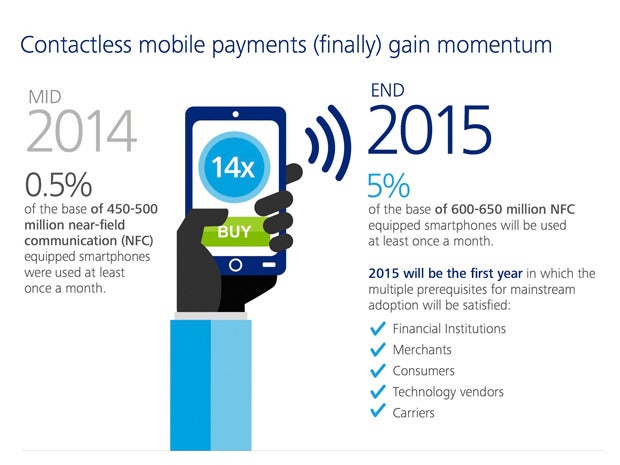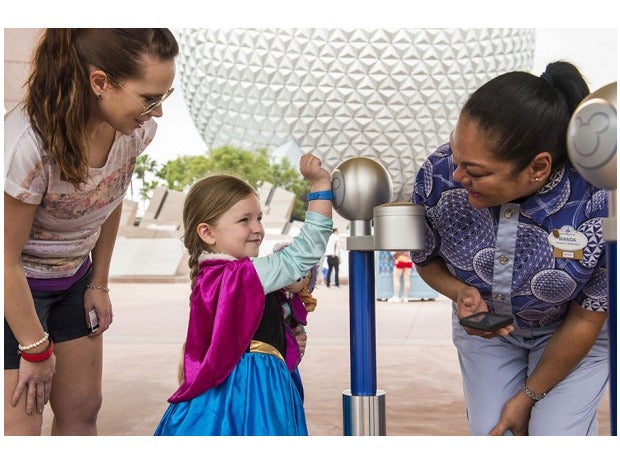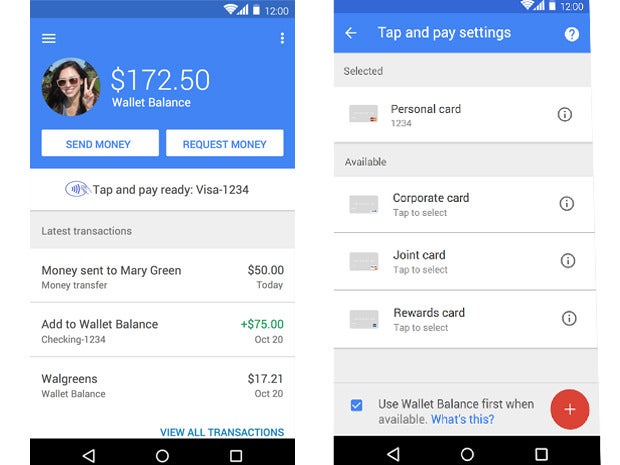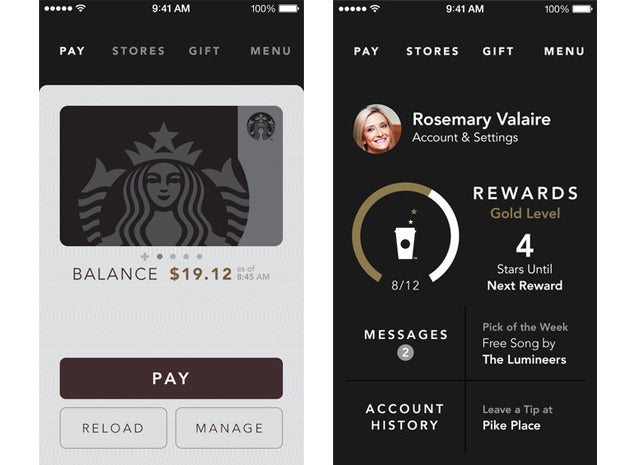Thanks to big moves from Apple, Samsung, Google and others, the world of mobile payments is rapidly evolving. More retailers accept digital payments than ever before and these 11 tech companies — as well as the world’s most famous coffee chain — are leading the charge.
Mobile payments in 2015
Mobile payments today

Image by Deloitte
CurrentC coming summer 2015

Disney ‘MagicBand’ at the Magic Kingdom

Apple Pay lifts Google Wallet

Starbucks leads by example









